Actress Kelly Rutherford plays a glamorous mother on the hit CW television show Gossip Girl and is known for her work on the series Melrose Place and Generations. Not only is she beautiful and talented, but she has also become a role model to many nursing moms.
The Best for Babes Foundation is deeply grateful to Ms. Rutherford for sharing her intimate and very personal breastfeeding story, as it gives us the opportunity to share expert information with moms and shed light on the cultural and institutional barriers—or “booby traps”—that are keeping 60% of new moms from achieving their personal breastfeeding goals, and keeping 89% from achieving the minimum recommended by the American Academy of Pediatrics. We’ve listed expert tips and resources for new and expecting moms at the end of the interview.
The Best for Babes Foundation especially admires Ms. Rutherford for her accepting and non-judgmental attitude: “It’s different for every mother,” she has said. “I don’t judge anyone for not breastfeeding and I don’t think people should be judging me.” The Best for Babes Foundation asks that the media and readers be respectful in sharing the story and in making comments. All comments are moderated.
How Kelly Prepared for Breastfeeding and the First Feeding
Best for Babes: Did you always plan to breastfeed? Did you have support for that decision?
Kelly Rutherford: Yes. I found a group of women that were very much pro-breastfeeding, especially my doula and my mid-wife. (1) It helped me feel more comfortable, because not all my girlfriends breastfed, or if they did, it was often for a shorter period of time, partly because they had to go back to work. It’s not always easy to go back to work and continue nursing. (2)
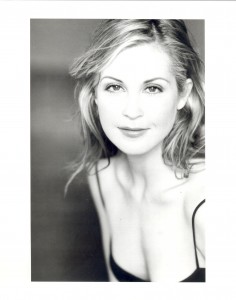
Actress Kelly Rutherford
KR: I took a class, but at the end of the day, if they are not latching on, then you feel “what’s wrong with me, what’s wrong with the baby.” Then, you have all sorts of experts talk about what’s going on. What I discovered, is that it is very important that the baby breastfeeds right away when she is born.(3) As soon as I gave birth to my daughter, she was right on the boob, and I’ve had no problems. It was a big difference from the first birth, with my son, which was a very long one, so they thought, let me rest a little bit, but then by the time I breastfed him it had been a few hours. With my daughter, obviously the doctor made sure that everything was okay, but I didn’t do all of the procedures they recommend right away, I did the least amount that was necessary that was still healthy, so that my daughter would be able to latch right away.(4)
BfB: Well you’re right, it does make a difference, there’s a window of opportunity right after birth where it’s easiest to start breastfeeding, there are videos which show that a brand new baby can actually crawl up the stomach and latch on the boob by itself!
KR: I’ve seen those videos and they are amazing. That’s also why the areola is darker, so it’s easier to find!
BfB: Exactly, it’s a bullseye. Nature planned it out really well. (5)
Overcoming Early Challenges
BfB: It sounds like you had a bit of a hard time in those early, potentially challenging first weeks after having Hermes.
I had every problem you could have with my son in the beginning. I had chafing; my toes would curl when he would latch on, because it was so painful in the beginning (6). You’ve just had a baby, and you want everything to be perfect. You want to give your child everything you can, so I called everybody! One person told me the skin under the tongue might be too short and might have to be cut (7), and even though it freaked me out, I got it checked and ruled out. I just wish I had had him on the breast right away when he was born! And I had some woman tell me I had to pump because I was engorged, but I wasn’t even that engorged, and I should have just breastfed him. At the beginning you don’t know, you’re just so new, and everything is so overwhelming, and everyone is telling you something different (8), and your husband is sitting there looking at you, and he’s trying to figure out how the pump works in the middle of the night, the whole thing is just cuckoo.
BfB: So you were at the mercy of all these different opinions, just like millions of moms. Millions of moms are not getting evidence-based help early enough—so they are experiencing difficulties that are avoidable. No wonder so many are throwing in the towel. (9)
KR: Yes! It’s so hard and you feel like such a failure. It took me about six weeks (10) to get my groove on and get it to where I had a lot of milk and my son was sleeping, and feeding well.
BfB: That’s about right, that’s about how long it takes. Did you use a lactation consultant?
KR: I did, actually I tried a few different people and resources, and it became a little overwhelming. I finally met a woman who was incredible (11). She’s the one I turned to for everything, she said don’t even give your son a bottle, you don’t need to give him a pacifier, she was really pro-breastfeeding, and that was so important. She gave me some herbs to take, she told me to drink more water, and to get more rest, which was key. The combination really helped. You know, you hear so many different things about switching sides, or how often, or how long on each side, or on a schedule! With my son, I ended up breastfeeding on demand, but with my daughter, I’ve been doing it more on schedule, probably because it was just easier from the beginning, and I have to, because I have a three-year old running around!
BfB: With the second birth, you tend to make more milk, Kelly, and so they may be easier to schedule. It also depends on the disposition or temperament of the baby . . . some babies just won’t tolerate being scheduled!
KR: That’s the way it was with my son, and finally I just decided to have him with me. I had one of those slings, and he was just on me all the time! Any time he cried or fussed, I just breastfed, whether it was for comfort or for food. When they’re little like that, it just made sense to me. Plus, I didn’t want to put him down! I probably didn’t let anyone hold him for the first few weeks, other than his dad.
BfB: The sling is a great tool. Is that something you would recommend to other mothers?
KR: I think the sling is fantastic, and there are so many chic ones now. You can even get a couple of different ones, they have some cool features. It also depends on whether your baby likes it . . . my son loved it, I would take him for walks and go to lunch with my friends, and I’d be able to breastfeed from the sling. Sometimes I’d throw a little towel over and it gave me extra privacy, and my son was comforted because he heard my voice and my heartbeat. My daughter is not as crazy about the sling, so I end up carrying her.
Dealing with Sibling Rivalry
BfB: How has your son reacted to your daughter and to your breastfeeding her?
KR: Well, he’s still nursing too, so they both just nurse.
BfB: Wow! Good for you! Has that helped with the sibling rivalry that sometimes comes with a newborn?
KR: I think it’s really helped the transition with the new baby that my son still gets that comfort and that cuddling. I’ve heard that babies that have been weaned when they see you nurse a newborn want to start nursing again.
BfB: Absolutely, toddlers do get jealous sometimes and tandem nursing (12) is a wonderful transitional tool.
KR: I just want to say, to each his own. I know it’s not for everyone. Some people wonder how I do it and isn’t it exhausting but you have to realize it’s not all the time. My son is mostly busy doing other stuff and it’s more of a comfort thing, but it is really cute when they are nursing together. He just looks at her, and checks her out, and puts his hand on her little feet. It gives him this close-up intimate look at her, and it’s very beautiful to see them to kind of get to know each other. When a child is starting to be independent, to be able to come back to the mother and hold on, they are processing things when they are nursing. The world is a big place for us, imagine what it is for them. For children, it’s a nurturing, cuddly place to come back to that’s safe, where they can process the world that they are in. I see my son processing, and my daughter already; they sit, they look at you, they are safe, they have a moment to breathe, to be nurtured.
BfB: We appreciate your sharing so honestly about this. Some women can’t imagine tandem nursing and can benefit from hearing another woman’s experience. Then they can factor it into making a decision that is right for them.
KR: I had a girlfriend who was very pro-nursing and would have kept going, but after about a year-and-a-half, that was it, her daughter was done. Each child is different and each mother is different, and I think that’s the important thing to look at here: it’s not that you have to go that long, I think it depends on your circumstances and your child.
BfB: Right! Moms deserve to get information free from undermining influences, and then be trusted to do what’s best for themselves and their families. Instead, new moms leave the hospitals with free formula samples which are proven to reduce breastfeeding duration, and then they are judged or feel guilty for giving up breastfeeding even though they never got the right support. For most moms, it’s not their fault—we live in a culture that is not truly breastfeeding-friendly, just gives it a lot of lip- service!
KR: Or they’re being told “you’re emotional” and you’re like, yeah, of course I am, I just gave birth which is the most extraordinary thing you can do. You’re trying to be the best mom you can be, you’re being told a bunch of different things, and you’re tired!
Kelly on Breastfeeding at Work, in Public, and on Social Disapproval
BfB: You’ve obviously been working and breastfeeding. Have you faced any discrimination at work?
KR: Not really at work, and not too much in public either. I do have friends that have that problem but fortunately I have not. I have a great job and it’s been really supportive of me as a mother and of me breastfeeding.
BfB: Believe it or not some companies provide smoking breaks but not pumping breaks, and no place to pump besides a dirty broom closet with an outlet or the bathroom. What do you think of the Breastfeeding Promotion Act, which has been re-introduced into Congress and aims to end this discrimination under the 1964 Civil Rights Amendment?
KR: I’m happy to endorse the Breastfeeding Promotion Act (13) and anything that is associated with this. It’s hard to go back to work and continue nursing. I’ve even heard of people being discriminated against on airplanes. And the thing is, every time we’ve travelled, my son is nursing on take-off and landing, and so his ears don’t hurt. As a result, he’s a lot less fussy, he doesn’t cry like a lot of kids do, and that’s a lot more pleasant for everyone on the airplane.
BfB: That is a great tool and it is so worth sharing. More moms need to hear that because so many moms fear public disapproval (14).
KR: I would love to endorse anything in terms of this . . . in the beginning, I kind of felt alone out there [after sharing about nursing Hermes as a toddler] because all of a sudden everyone in the press was talking about it, good and bad, and I thought, oh my God, what have I said! I didn’t think it was that risqué or odd to talk about it, because it is acceptable to talk about so many things in the world. Just consider what they talk about on the news, or even show on the news!
BfB: Or for example the giant billboard about hemorrhoids that I saw on the way to the airport. That is a lot more offensive to us than somebody nursing in public.
KR: And really, breastfeeding is nature’s way, how have we gotten so away from this, that we don’t appreciate the beauty of it? It’s because of the pacing of our lives, and because of the industry that created formula putting pressure on us to move away from the natural way.
BfB: That’s exactly right.
Kelly’s Advice: It’s a Day to Day Process and Just Do Your Best
KR: Ultimately, we just have to do what we can as mothers. It comes down to, hey, this is the best I can do as a mother, and if the best you can do is nurse for the first 3 weeks, 3 months or six months, or whatever you can do, hey, that’s great. Even if you can only do it for a short period in the beginning, you’re still helping. A lot of women have a lot of pressures, they have to get back to work, or they are getting pressure from their husbands, or whatever. Just to realize that this child can live on to 80, 90 or 100 and if you take one one or two years to do this, it is not a long period of time in their life or your life.
BfB: So six months is worth it for a lifetime of benefits. New studies show a lower risk of heart disease for mothers who breastfeed, and a hugely lower risk for pre-menopausal breast cancer for those with a family history. Yet, most moms are being prepared and supported much more for 9 months of pregnancy and a couple days of labor than for breastfeeding success. (15)
KR: And it kind of flies by. I had thought, well I’ll just nurse for as long as it makes sense, and here I am and if you had asked me, I’d at least like to do it for a year, we’ll see how it goes. And then you realize two years have flown by, and you’re like, oh my gosh, I’m still doing this, well, it’s okay, he’s not in college! (laughs)
BfB: Some experts put it in the perspective of the global average, which is between 4 and 7 years. Nursing beyond a year makes sense for our species; we are “carry mammals” whose babies are born extremely immature and developmentally dependent. Not everyone can breastfeed (16), not everyone can make it work in our culture (17), but if you can, you should feel good about it, and not be judged for it.
KR: There’s so much comfort involved, bonding involved, and security.
BfB: What advice would you give to a mother who says “I’m thinking about it, but I’m just not sure.” For example, before my (Bettina’s) first was born, I wasn’t sure I really wanted to breastfeed.
KR: I would say, “What are you not sure about? What are your concerns?” Because we have to address a woman’s concerns! (18) Is it the time you are going to be spending doing it? Is it that you don’t think you can do it? Is it that you think it will affect your relationship with your partner or your husband, what are the issues at hand here? I think not to look at it as a huge overwhelming thing, look at it like everything in life, as a day to day process, that evolves, between you and your child. Don’t look at it like, oh my God, I might have to breastfeed for the next two years of my life. That’s overwhelming, to anybody! Whenever we look that far in the future about any change we are making in our lives, even a year can seem overwhelming. I say, stay in the moment and listen to your heart. I think children are here to teach us just as much as we are here to teach them. They are here to teach us to slow down, to take the time to focus on what is really important in this world.
BfB: You’ve said that beautifully and we are so grateful that you’ve been so open and honest with us. We hope that attitudes about breastfeeding can change, after all, there was a time when using seatbelts and sunscreen were not commonly practiced either.
KR: It’s a little scary at first to talk about because it’s not something everybody talks about, but I think it’s beautiful what you’re doing and incredible. I think the fact that you’ve come together, and that you are doing this shows that things are shifting in the world. Thank you!
BfB: Thank YOU, Kelly, for being a pioneer and a leader in sharing your incredible story!
Tips & Resources
- To find a doula, you can type in your zip code at www.dona.org.
- See www.workandpump.com and our Top 5 Tips for Breastfeeding and Going Back to Work
- “Latch Within the First Hour” was the theme of World Breastfeeding Week 2008, and is one of the secrets to early breastfeeding success.
- Consult with your health-care practioner, see A-Team to make sure your practitioner is breastfeeding-friendly.
- Learn more amazing and little-known facts about your mom-made wonder food™!
- While there may be some initial discomfort with latching, acute pain is not okay! If you are experiencing pain see an International Board Certified Lactation Counselor (IBCLC). Not getting the RIGHT help EARLY enough is one of the biggest reasons moms stop nursing before they intend to.
- “Tongue-Tie”, a short frenulum, or other problems with suckling are overlooked as a cause of a poor latch and pain with breastfeeding. Often a simple outpatient procedure can correct the problem, unfortunately, today’s physicians are not as educated about tongue-tie because of reliance on bottle-feeding. Recently, the AAP issued new recommendations for physicians to address this.
- Conflicting advice from well-meaning friends or even professionals, is a Booby Trap! Not all doctors or mothers are breastfeeding experts. To resolve problems, please seek out the help of a International Board Certified Lactation Consultant, or if your insurance doesn’t cover it, go to a breastfeeding support group led by a certified lactation counselor or a La Leche League Leader.
- It is simply not acceptable that 60% of mothers are not able to meet their personal breastfeeding goals, whether that is one week, one month, or one year. Moms are being urged to breastfeed but set up to fail by cultural and institutional barriers. Please help us Beat the Booby Traps and put pressure on the barriers, not moms!
- It typically takes 2-6 weeks to master the Learning Curve of breastfeeding.
- To find a lactation consultant, plug in your zipcode at Ilca.org or Breastfeeding.com. Kelly’s lactation consultant was Cynthia Epps, MS, IBCLC of MotherWork.
- La Leche League has a collection of articles on tandem nursing, or read Adventures in Tandem Nursing, by Hilary Flower — this book has a cute cover!
- See The United States Breastfeeding Committee (USBC) to learn more about the Breastfeeding Promotion Act. It just takes a few minutes to show your support!
- A recent survey in the U.K. reported that 2 out of 3 moms fear disapproval or rude stares for nursing in public.
- See our Ultimate Breastfeeding Checklist for expecting moms.
- While most moms are physically capable of breastfeeding, a few are not, and should be respected, not judged, and provided with resources. According to the World Health Organization, the best substitute after the mother’s own milk is screened, pasteurized, donated human milk (see hmbana.org).
- Some moms choose not to breastfeed; often it is the cultural or institutional barriers (Booby Traps), that have prevented them from deciding to breastfeed or succeeding at breastfeeding. Regardless of the reason, moms deserve to be respected, not judged and provided with resources. None of us can walk in another woman’s shoes, she deserves our support.
- The best advice ever; thank you Kelly! We need to do less talking about the benefits and more listening to mom’s concerns. If your mother-in-law disapproves of breastfeeding, you’re afraid of nursing in public, or your employer provides no support (to name just a few obstacles), the benefits of breastfeeding pale in comparison to the Booby Traps. When we know a mother’s concerns, we can help her problem-solve and find solutions that work for her, and we can advocate for more change!



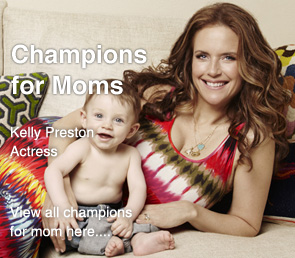
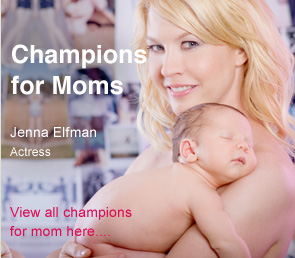
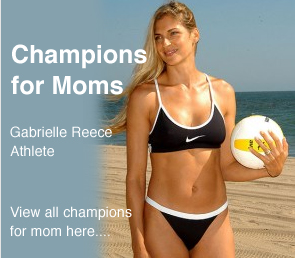
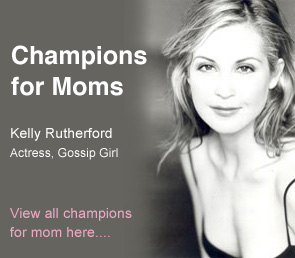
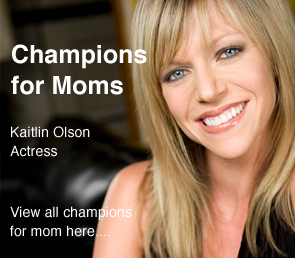
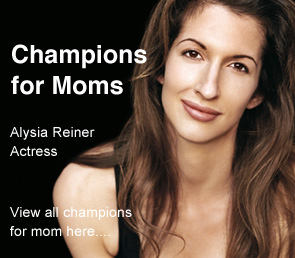
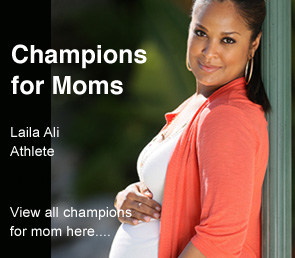

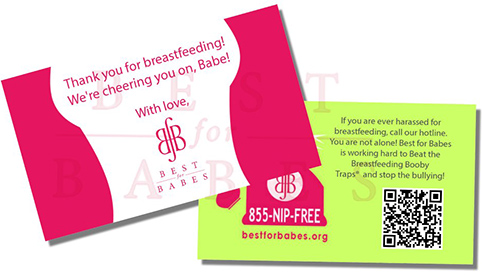

Pingback: Around the Web… - Celebrity Baby Blog - People.com
I have four children who were breast fed on average two and a half years each. With each child came new or different obstacles. I only wish this web site was available 16 years ago or even 5 years ago. Thanks for the interview, and this website. Along with the free sample formulas that are given out to expecting mothers they should also give out websites, breast pads, and perhaps a coupon for a free nursing bra to help a new mother /baby get off to a good start.
Fantastic work Bettina, Danielle and Kelly! I am very excited for the future of breastfeeding in our culture.
Thank you for this article and for what you say in Tip #16. I was not able to breastfeed physically, and what I needed were resources, not blame…
I am nursing my 3.5 yr old daughter and my 18 month old son. Kelly, you are one of my absolute favorite celebrity moms. Thank you for speaking out about “extended” nursing.
I enjoyed the article however I have a issue with her still breastfeeding her son at his age. He can get the same benefits from the breast milk if she puts it in a cup. The kids don’t get the benefits from sucking on the breast they get it from the milk itself. I breastfed my daughter until she turned 1 1/2 years old and then started putting it in a cup and she got the same benefits.
Thank you Kelly for being so open and honest about your breastfeeding experience. You are an inspiration to women like myself who would love to continue breastfeeding beyond the ‘accepted’ one year mark, and who would love to be able to tandem feed if and when I have a second baby. I would love to know how you found breastfeeding during your pregnancy? My son is 7 months old now, and my period still hasn’t returned, so I am just hoping that that will happen before my partner and I start trying for another baby. I’m wondering if I will need to reduce the number of feeds I’m doing for this to happen… Are you able to tell us how often you were breastfeeding during your pregnancy? Thanks again for a wonderful interview, and best of luck with your two beautiful babies!
Pingback: Kelly Rutherford Recalls Difficulty Nursing Hermés - Celebrity Baby Blog - People.com
michelle, great job on providing your milk, but i respectfully disagree with you that your LO got the same benefits. it simply isnt true.
i nursed my 1st child for 24 mos. he self weaned.
7.5 yrs later i had dc2 and he self weaned just after his 5th b-day.
neither EVER had a drop of artificial milk and each was only ever given a bottle bm once after nurding was well established, just to see what happened. baby1 rejected it and baby2 sucked it right down!
Thanks for the great and informative article.
To address comment #6-the woman who has a problem with an older child nursing: One of the benefits that a child of any age misses from simply receiving breastmilk in a cup is the benefit of human touch and skin-to-skin contact. Many people seem to think that breasts are sexual objects, but in human history they were designed to nurse babies and were not viewed as sexual objects until much later.
I’ve seen nursing soothe my intense toddler too many times to want to give up the human touch and closeness that works so well for us.
Pingback: Information about Breastfeeding
Pingback: Kelly Rutherford Recalls Difficulty Nursing Hermés - Celebrity Wildcard | Celebrity Wildcard
It is awesome that Kelly is tandem nursing and is sharing that with the public here. I too tandem nurse my 3 1/2 year old son and 5 month old daughter. Watching them interact while nursing is heartwarming and a memory I will carry with me always. He absolutely adores here and jealousy has never been an issue between them. I attribute it at least in part to this.
Great article. In the spirit of sharing information so each mom can decide what is best for her, here is information on whether it makes a difference (in this case physically healthwise) if the milk comes from nursing at the breast, or in a cup or bottle. Milk is great either way!
Check out the links on the side for Sleep Apnea, and Total Health
http://www.brianpalmerdds.com/
Dear Kelly, you are absolutely right as for the slings. I like slings for being adjustable and reversible. Not only they have different carrying positions which is a great advantage, they can be of different prints and colors. Once I’ve tried organic fabrics for slings and I keep wearing them, they are really beautiful. Moreover, a pocket in the tail is great indeed!
Thanks for sharing your story Kelly. It was great to read about your success with tandem nursing, and to get a sense of some of the experiences that have helped you learn along the way. Congratulations!
Thanks Bettina for the resource list that followed the interview. Your comments and insightful interview questions help us all understand more about the challenges, and solutions available to moms who want to breastfeed.
I’ve nursed mine to 5 years and 5 years have been the most wonderful of my life and only became ill 2 times from going to school and day has cured inches. Now 7 and is a happy child.
When my daughter was born she went on the breast right away and 6 weeks later she s just starting to latch properly and feed. She lost too much weight because she wasn’t feeding properly and had to be supplemented with formula but once my milk came in I pumped and was able to feed her breast milk exclusively.
We are still learning to breastfeed and I still pump.
I feel like it should be said that most babies will eventually get it and if moms have the support they will be able to breastfeed.
It is tiring and hard but it is getting easier